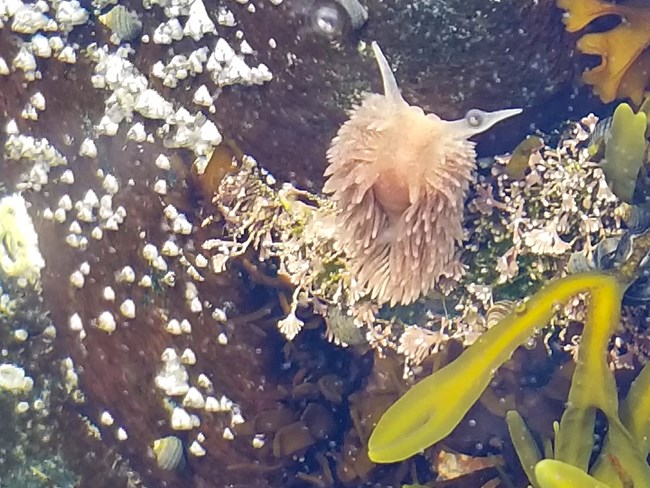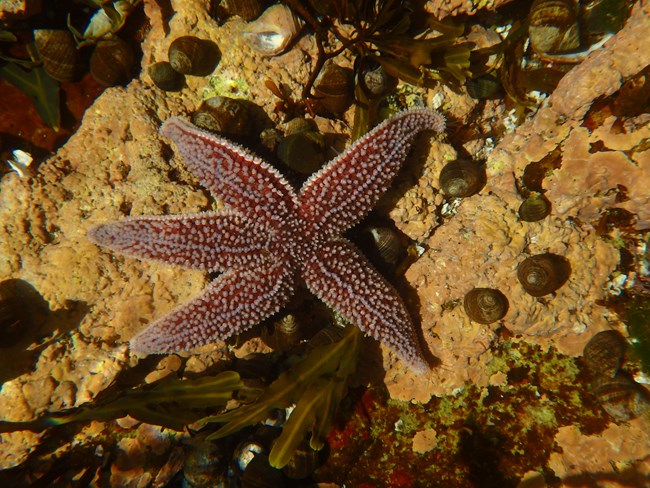Last updated: August 27, 2020
Article
The Life of a Tide Pool in Acadia

NPS Photo/Crystal Lewis
Acadia National Park is part of an archipelago, a collection of islands nestled in the Gulf of Maine. Within this cluster, there are dynamic ecosystems that move between the patchwork of land and sea. The sea itself changes, as the moon’s invisible gravitational forces pull on and shift its shape, creating two high and two low tides every day. Around low tide, saltwater from the gulf travels away from the shore. With each passing minute, more of Acadia’s craggy coast is exposed, as the water moves through crevices and along rock faces out to sea. Water fills in a large depression, trapped there in a granite pool. A wave rolls in and breaks on the cliffs, splashing more saltwater in. A tide pool is born here, in this rocky cavity that twelve hours ago housed another one of its kind. Though existing in the same location, this tide pool houses a different collection of residents than the one that came before it.
The Tide Pool's Residents
This tide pool, located on the edge of Acadia in the portion of the tidal zone that is not often exposed, reveals a story otherwise hidden beneath the cool waters of the Gulf of Maine. The pool has a short life of a few hours that is packed with change and action. The water teems with microscopic life, trapped here from their inability to swim against currents. Barnacle larvae swirl around along with other plankton, some of which will grow to be sea snails, marine worms, and even jellyfish. Phytoplankton, or miniature plants, float towards the surface to soak up the sun.
NPS Photo, Lilly Anderson
There are some permanent residents attached to the rockface, watching their home and world change around them from their fixed position. Acorn barnacles glued to the upper side of the pool prepare for the water level to lower, as sunlight evaporates water from the surface. They close their fitted, plate-like doors to keep water inside their home for when they are exposed to the salty air. Barnacles on the bottom of the pool stay open, and when it is feeding time, will stick their feathery feet out to grab a microscopic meal.
The Tide Pool Ages
Another hour passes, and the tide pool ages quickly. The water warms as sunlight beams down on a cloudless day. The warmer water has less available oxygen mixed into it, and the concentration of salt increases, as more and more water evaporates. The residents of the tide pool are accustomed to these dramatic changes, as they have spent much of their lives in the dynamic intertidal zone.
NPS Photo, Crystal Lewis
